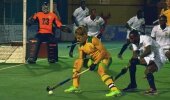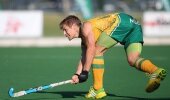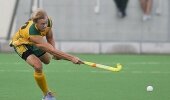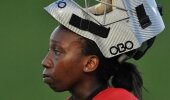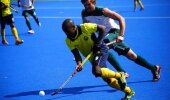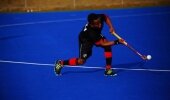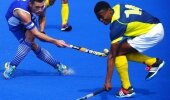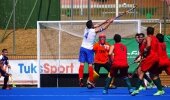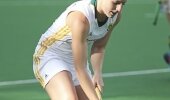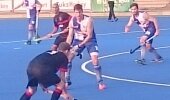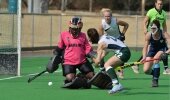Words: Jonathan Cook | Photo: Ady Kerry
HOCKEY, like most sports, relies almost entirely on time out in the middle for a team to even begin to work together as a finely-tuned unit. The weight of the through-ball requires the midfielder to have a very good idea of the speed of his striker, a little too hard and the game-breaking pass might go over the baseline or be cut off by a defender … these are the nuances that make the difference between winning and losing amongst elite nations in world hockey. And just like the serious cricketer, extended time spent in the middle is worth dozens of net practices, throw-downs and bowling at a single stump or trying to deliver the ball onto a handkerchief on a good length.
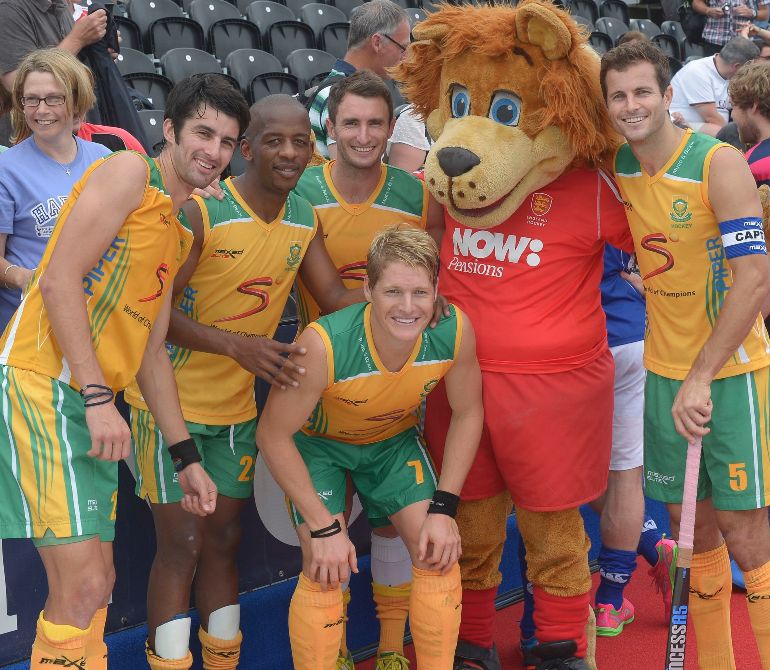
Photo by: Ady Kerry
And this is where the SA men’s hockey team fall down. Already a nation in the top 12 of a fiercely competitive pecking order amongst the best 15 to 20 countries in world hockey, it is the Achilles heel holding the lads in green and gold back from making meaningful progress from bottom four in the sport’s Majors, the 12-team World Cup and Olympic Games into the middle four and eventually the business end as medal contenders.
The men’s event at the lower-profile (in hockey terms) yet equally important Commonwealth Games offered an insight into the team’s problems, that fine line, the slenderest of margins, between toppling the best and ending amongst the also-rans yet again.
The key CG match in Glasgow last week was against world number nine India – a hugely improved side now that Aussie legend Terry Walsh is in charge – it was the clash that captain Austin Smith’s SA lads had pinpointed long before the tournament as pivotal to their path to the semi-finals and with it the chance of a medal.
Plotting their way successfully through this vital Pool A match, essentially a quarter-final, would also have signified a milestone in the team’s progress. However, a poor first half highlighted the gulf between a well-oiled team and one still feeling its way and the upshot was a 5-2 victory for the fabulously skilled men from the sub-continent.
Those nuances, the innate understanding between players in the three lines – defence, midfield and upfront – and the crossover amongst those lines, the delicately weighted pass of supremely talented SA midfielder Clint Panther and lightning quick striker Julian Hykes, those nuances were primarily on India’s side. What South Africa have in abundance is a fighting spirit that all-but transcends adversity, yet the gap between the Indians (never mind the all-conquering Australians) is still too wide to expect success from heart alone.
To be fair, SA were dealt a massive blow when key defender Andrew Cronje and experienced midfielder Jonty Robinson were blown out of the Glasgow tournament very early through injury, yet that is not the core of the matter.
Time spent in the middle, through plenty of “nothing” Test matches where only pride is at stake, is makes for success at the top. Medals will never come at global hockey showpieces when SA only get together a fortnight or so in advance while full-time opponents have been preparing for months – even years in advance.
Playing in plenty of “nothing” Test matches, allied with weeks and even more weeks of training camps, irons out the kinks and makes for a genuine medal contender. But that takes money, five or six million rand a year at least.
Where is it going to come from?
